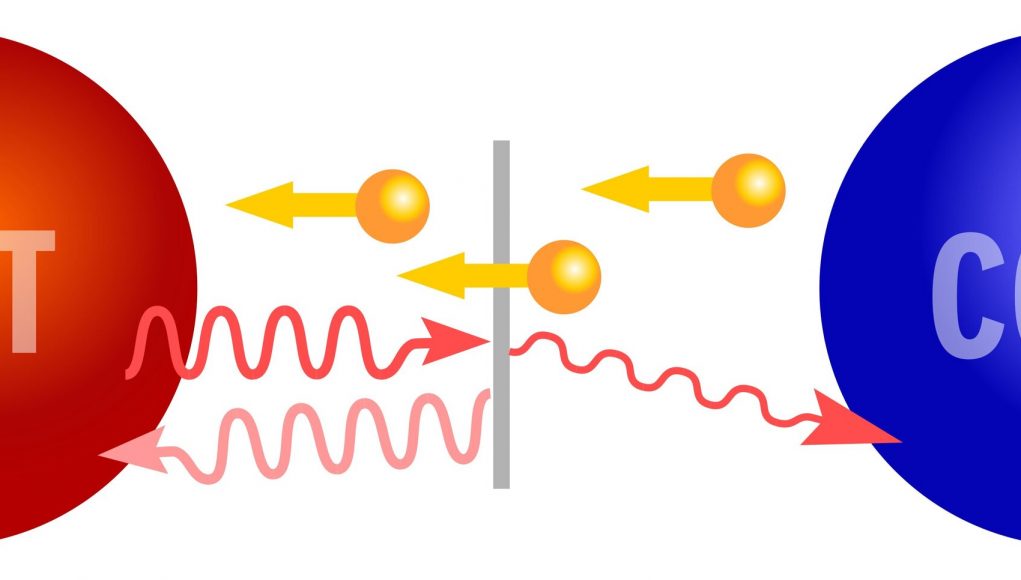VTT researchers have successfully demonstrated a new electronic refrigeration technology that could enable major leaps in the development of quantum computers. Present quantum computers require extremely complicated and large cooling infrastructure that is based on mixture of isotopes of helium. The new electronic cooling technology could replace these cryogenic liquid mixtures and enable miniaturization of quantum computers.
In this purely electrical refrigeration method, cooling and thermal isolation operate effectively through the same point like junction. In the experiment the researchers suspended a piece of silicon from such junctions and refrigerated the object by feeding electrical current from one junction to another through the piece. The current lowered the thermodynamic temperature of the silicon object as much as 40% from that of the surroundings. This could lead to the miniaturization of future quantum computers, as it can simplify the required cooling infrastructure significantly. The discovery has been published in Science Advances.
“We expect that this newly discovered electronic cooling method could be used in several applications from the miniaturization of quantum computers to ultra-sensitive radiation sensors of the security field,” says Research Professor Mika Prunnila from VTT Technical Research Centre of Finland.
New opportunities for science and business
Several sensitive electronic and optical devices require low temperature operation. One timely example is a quantum computer built from superconductive circuits, which require refrigeration close to the absolute zero of thermodynamic temperature (-273.15 degrees C).
Find your dream job in the space industry. Check our Space Job Board »
Today, superconductive quantum computers are cooled by so-called dilution refrigerators, which are multi-stage coolers based on pumping of cryogenic liquids. The complexity of this refrigerator arises from the coldest stage, the operation of which is based on pumping a mixture of different isotopes of helium. Even though modern dilution refrigerators are commercial technology, they are still large, expensive scientific instruments. The electronic cooling technology developed by the VTT researchers could replace the complex coldest parts and lead to significant reductions in complexity, cost and size.
“The demonstrated cooling effect can be used to actively cool quantum circuits on a silicon chip or in large scale refrigerators. Needless to say that we at Bluefors are following this new electrical refrigerator development with great interest,” says David Gunnarsson, chief sales officer at Bluefors Oy, the leading company of refrigerator solutions for quantum systems and computers.
Straightforward solution to a seemingly fundamental physics problem
The research team was searching for an efficient and practical method to drive heat from one place to another via electrical current. The most efficient solution would be provided by a solid junction, where the hottest electrons climb over a short atomic-scale potential barrier. The challenge with this approach is that the heat is not carried only by the electrons, but also by the quanta of the atomic lattice vibrations—so-called phonons—also carry a significant amount of the heat. The phonons traveling between the hot and the cold level out the temperature differences very effectively, especially over a short distance.
It seemed that the most efficient electronic cooling method always led to the worst possible phonon heat leak, and thereby, a nil result in terms of overall cooling. The VTT research team postulated that a straightforward solution to this seemingly fundamental problem could exist: Certain material junctions could block the propagation of the phonons while the hot electrons pass through it.
The team demonstrated the effect by using semiconductor-superconductor junctions to refrigerate a silicon chip. In these junctions, the forbidden electronic states in the superconductor form a barrier over which the electrons from the semiconductor have to climb to drive the heat away. At the same time, the junction itself scatters or blocks the phonons so effectively that the electronic current can introduce a significant temperature difference over the junction.
“We believe that this cooling effect can be observed in many settings, for example, in molecular junctions,” says researcher Emma Mykkänen from VTT.
Provided by:VTT Technical Research Centre of Finland
More information: Emma Mykkänen et al. Thermionic junction devices utilizing phonon blocking. Science Advances (2020). DOI: 10.1126/sciadv.aax9191
Image Credit: VTT Technical Research Centre of Finland
